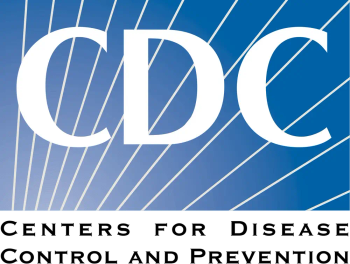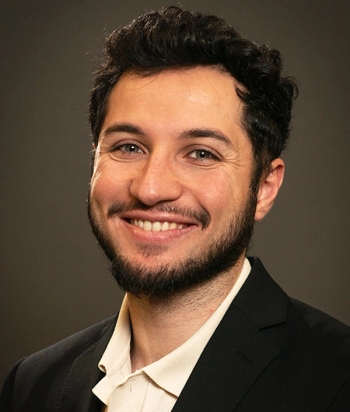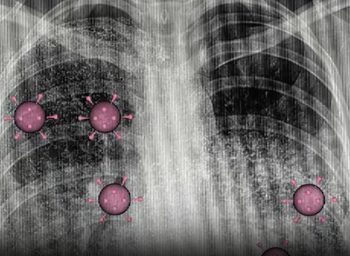
Growing threat of beta-lactamase resistance genes across human and animal health, efforts to reduce HIV disparities for Black women, the "skip phenomenon" in S lugdunensis endocarditis, and more.

Growing threat of beta-lactamase resistance genes across human and animal health, efforts to reduce HIV disparities for Black women, the "skip phenomenon" in S lugdunensis endocarditis, and more.

CEO Lori Tremmel Freeman discusses NACCHO's capacity-building programs and strategies to strengthen local health departments in addressing evolving public health threats.

Robert H. Hopkins, Jr, MD, medical director, National Foundation for Infectious Diseases (NFID) provides an update on incidence rates and virus patterns across different regions of the US.

Mary Rochelle Smith, MD, Julie J Lee, MD, and Amy Chang, MD, PharmD, share expert strategies for implementing effective clinical decision support tools in practice.

Study shows 2′-fucosyllactose, a sugar in human milk, could reduce norovirus replication, offering hope for new treatments amid rising cases.

The federal agency is asking hospitalists and labs to accelerate this process in order to know if they are dealing with avian influenza.

In persons living with HIV and diabetes, the management of diabetes is lagging behind the evidence. Despite SGLT-2 inhibitors demonstrating robust clinical data in the general population, they are grossly underused in persons with HIV and diabetes.

Patrick D Crowley, DO explains the impact of the "skip phenomenon" in Staphylococcus lugdunensis infective endocarditis, linking it to longer hospital stays and higher mortality rates.

There are high infection rates in this population, but limited opportunities to bring about awareness and education. However, a newer program sponsored by ViiV Healthcare looks to engage these women and bring about a better understanding behind transmission and care.

A new treatment of albendazole and ivermectin shows higher efficacy against Trichuris trichiura and hookworm infections, offering a new treatment approach for soil-transmitted worms.

These types of infections will continue to rise, and there is a need to understand what we are witnessing and find ways to combat them.

Babafela Awosile, DVM, MVSc, PhD, DACVPM, discusses the need for surveillance as blaCTX-M-15 and blaCMY-2 spread in humans, animals, and the environment.

In the second part of our conversation, Abdulwhab Shremo Msdi, PharmD, discusses using this methodology.

The Phase 1 clinical trial for ARCT-2304, a self-amplifying mRNA vaccine, seeks to address pandemic influenza risk as H5N1 cases increase.

The choice between debridement and implant exchange affects treatment outcomes for Candida-related prosthetic joint infections, highlighting the need for standardized guidelines and further research.

How targeting zinc deprivation in VIM-2-expressing bacteria may open new doors for treating multidrug-resistant infections, with azithromycin showing promise.

Abdulwhab Shremo Msdi, PharmD, offers insights on its complexities, why institutions have been slower to include this dosing technique, and why clinicians need to consider this approach.

Larry Sutton, MD, PhD, discussed how oxygen affects C. difficile and provides anti-inflammatory effects in the gut, with potential applications for gastrointestinal diseases.

Study questions whether reducing antibiotic treatment duration for pneumococcal bacteremia still ensures effective outcomes and minimizes risks.

Between those infected and uninfected with COVID-19, investigators observed no differences in symptom trajectories, assessed through SymptoMScreen.

Findings from a recent phase 3 trial show promising results for the approval of ziresovir in the treatment of respiratory syncytial virus in infants.

This week, norovirus cases linked to contaminated oysters, while the first US death from H5N1 avian influenza is confirmed, the FDA updates RSV vaccine labeling due to Guillain-Barré Syndrome risks, and more.

Invivyd announced its product, pemivibart (Pemgarda), has continued to show consistent neutralization for almost 3 years, with no meaningful change to activity.

CEO Larry Sutton, MD, PhD, discusses SIDIPREV, a novel oxygen-based therapy aimed at preventing C difficile infections.

As politics increasingly intersects with science, infectious disease clinicians are called to take on advocacy roles. By engaging with their communities, clinicians can dispel misconceptions, highlight the importance of federal health institutions, and emphasize their role in safeguarding public health and advancing medical progress.

The continuation of misinformation and disinformation being disseminated in the public is causing more public health communication issues as mistruths associate the vaccines with cancer.

New findings explore how HSV-1 infection influences tau phosphorylation via the cGAS-STING-TBK1 pathway, offering potential therapeutic avenues for Alzheimer's treatment.

The federal agency approved safety labeling changes to the prescribing information for Abrysvo (Pfizer) and Arexvy (GSK) RSV vaccines for seniors after data from clinical trials, reports to the Vaccine Adverse Event Reporting System (VAERS), and a postmarketing study.

Study reveals how bacteria secrete natural products that make their competitors vulnerable to viral infection, with potential implications for enhancing phage therapy and shaping microbial ecosystems.

A survey of this population showed that over a 2 and ½ year period, there was a decrease in post-acute sequelae of SARS-CoV-2 infection (PASC). However, 1% of respondents said they are still dealing with restrictions in their lives.